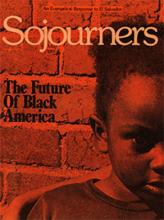The nuclear age began in an atmosphere of fear and secrecy. Since 1945, heightened tensions between the superpowers (once the Soviet Union had acquired the bomb) and Cold War rhetoric have served as a rationale for the steady buildup of arms.
But another dynamic factor, equally important and even more insidious, has been the vested interests of the scientific and military establishment in the development of ever more sophisticated and destructive weapons.
Government officials have estimated that one-third to one-half of all scientists and engineers in the U.S. are currently engaged in military-related research and development (R & D). In 1970, the U.S. devoted a fifth of its engineers, a fourth of its physicists, a fifth of its mathematicians, and nearly half of its aeronautical engineers to military-related work.
The government's Fiscal Year (FY) 1982 budget proposes an increase of more than 21 per cent for military research, development, testing, and evaluation: a total of nearly $22 billion to be divided between the Department of Defense (DOD) and the Department of Energy (DOE). Some of the projects it will fund, like the M-X missile and new guidance systems, have immediate military application; others are aimed at developing more basic concepts and technology with long-term military payoffs. While most of us are still struggling to understand what is on the drawing boards for the 1980s, the advanced research we are now funding will help build the technological base for particle-beam and laser weapons for the year 2000 and beyond.
An example of the cost of scientific talent and expertise needed to develop a major new weapon system is the funding for the M-X missile. The FY 1981 R & D budget for the program is $1.4 billion—more than the combined R & D budgets of the Department of Labor, Education, Transportation, the Environmental Protection Agency, Federal Drug Administration, and Center for Disease Control.
Read the Full Article

